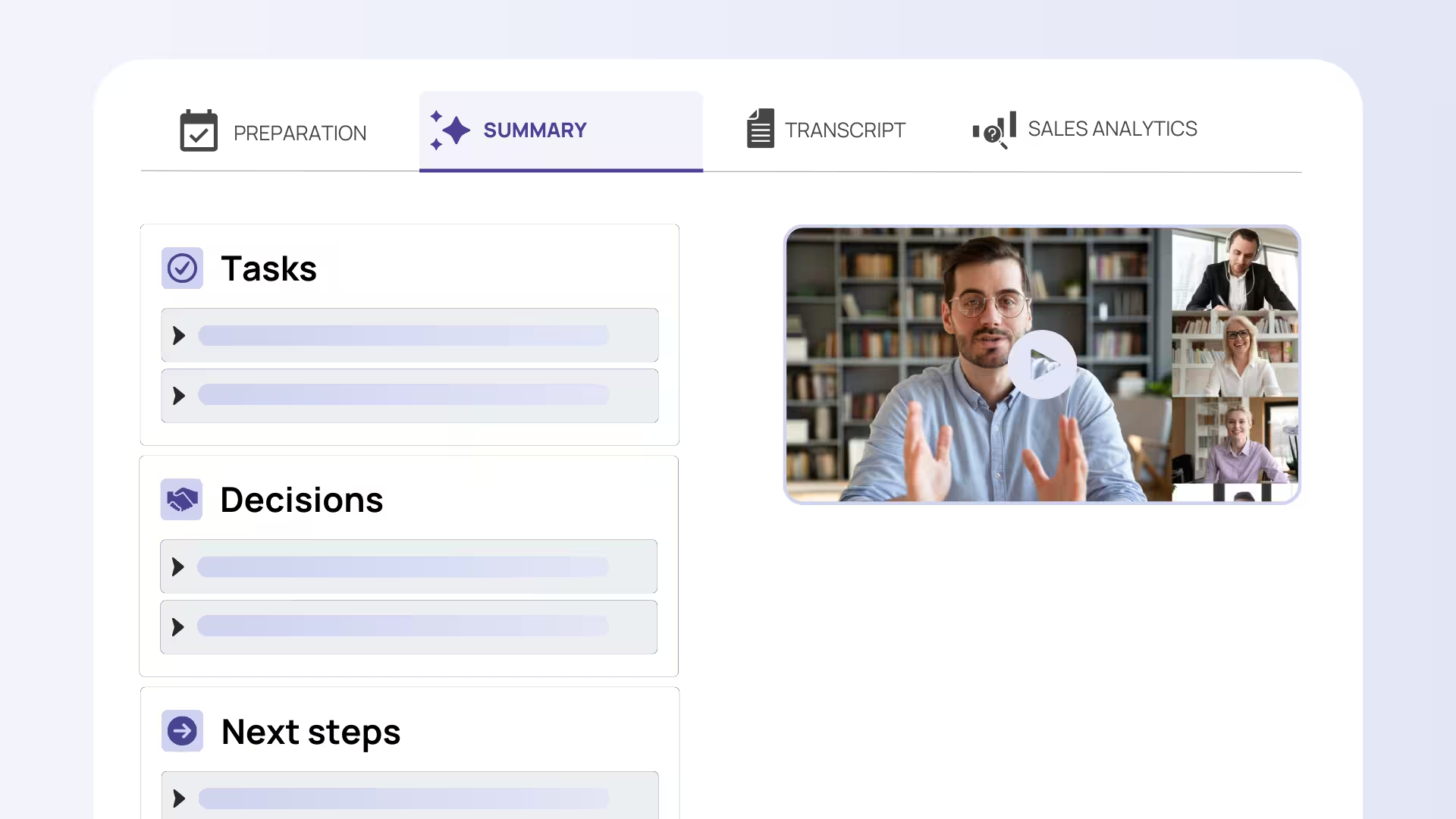Table of Contents
Understanding the Importance of Catch Up Meetings
A catch up meeting is an informal or semi-formal gathering where team members and managers align on work updates, share challenges, and check in on overall wellbeing. Unlike formal project meetings or status updates, these conversations focus on maintaining connection and ensuring everyone stays on the same page.
In today's remote and hybrid work environments, catch up meetings have become more crucial than ever. With 43% of U.S. employees working remotely at least some of the time, these touchpoints help bridge the gap that physical distance creates. They serve as vital communication lifelines that keep teams connected and aligned.
The key benefits are clear: improved team communication, stronger relationships, and ongoing alignment on priorities. This article will explore the core purpose of catch up meetings, share best practices for conducting them effectively, discuss technology solutions, address cultural considerations, and provide guidance on measuring their success.
What is a Catch Up Meeting and Why Is It Important?
Definition and Core Purpose
Catch up meetings are informal conversations focused on syncing updates, sharing challenges, and fostering open communication. They differ significantly from formal project meetings or structured status updates. While project meetings dive deep into specific tasks and deliverables, catch up meetings take a broader view of team dynamics and individual wellbeing.
The primary role of these meetings is maintaining team cohesion and morale. They create space for conversations that might not happen naturally in task-focused environments. Think of them as the virtual equivalent of those spontaneous hallway conversations that used to happen in traditional offices.
Benefits of Regular Catch Up Meetings
Regular catch up meetings build trust and rapport within teams. As leadership coach Simon Sinek notes, "The value of catch-up meetings isn't just in the words spoken, but in the trust built over repeated, honest check-ins." This trust becomes the foundation for stronger collaboration and more effective teamwork.
These meetings prevent miscommunication and keep everyone aligned on priorities. When team members regularly share updates and challenges, small issues don't grow into major problems. A quick mention of a potential roadblock can lead to immediate problem-solving rather than delayed crisis management.
The collaborative benefits extend beyond just information sharing. Catch up meetings enhance relationships by encouraging transparent dialogue. They create psychological safety where team members feel comfortable expressing concerns or asking for help.
Employee engagement also receives a significant boost. These meetings provide dedicated space for feedback and recognition. When people feel heard and valued, their motivation and commitment to the team increases naturally.
Perhaps most importantly, catch up meetings support mental wellbeing by checking in beyond task updates. They acknowledge that employees are human beings with lives outside of work, which becomes especially valuable in remote settings where personal connection can easily be lost.
.avif)
Best Practices for Conducting Effective Catch Up Meetings
Structuring Your Catch Up Meeting
Effective catch up meetings start with a clear agenda that includes focused topics and time allocations. A simple structure might include a brief personal check-in, project updates, challenges or roadblocks, and upcoming priorities. This framework keeps conversations productive while allowing for natural flow.
Incorporate icebreakers or quick personal check-ins to foster connection. Something as simple as "What's one highlight from your week?" can help team members see each other as whole people rather than just colleagues. This is particularly valuable for remote teams who miss out on casual office interactions.
Define roles and expectations clearly. Managers should focus on mentoring and support, while team members concentrate on updates and feedback requests. When everyone understands their role, conversations become more focused and valuable.
Encourage open dialogue by ensuring all voices are heard. Use round-table techniques where everyone gets a chance to speak, or employ soft facilitation to draw out quieter team members. The goal is creating an environment where everyone feels comfortable contributing.
Scheduling and Frequency Considerations
The recommended scheduling frequency depends on team size and workflow intensity. Small, fast-moving teams might benefit from weekly catch ups, while larger teams or those with slower project cycles might find bi-weekly or monthly meetings more appropriate.
Avoid meeting fatigue by balancing regular communication with respect for people's time. Too many meetings can disrupt productivity and create resentment. The key is finding the sweet spot where you maintain connection without overwhelming schedules.
Keep meetings brief and focused. Most effective catch up meetings last 15-30 minutes. This timeframe allows for meaningful conversation without dominating people's calendars. If discussions regularly run longer, consider whether the meeting structure needs adjustment or if some topics should be addressed separately.
Leveraging Technology in Remote and Hybrid Settings
Video conferencing tools like Zoom, Microsoft Teams, and Slack have become essential for remote catch up meetings. Video calls create more personal connections than audio-only conversations, while screen sharing allows for collaborative problem-solving when issues arise.
Modern meeting platforms offer features that enhance engagement significantly. Live document collaboration lets teams update shared resources in real-time, while recordings can help absent team members catch up later.
AI meeting assistants like Sally can automate transcription, note-taking, and action item tracking. This technology allows participants to focus on conversation rather than documentation. Sally's ability to integrate with over 8000 platforms means meeting insights can flow seamlessly into existing workflows.
Privacy and GDPR compliance considerations are crucial when using meeting technology. Tools like Sally prioritize data protection while providing powerful meeting support, ensuring teams can leverage AI assistance without compromising security.

Navigating Interpersonal and Cultural Dynamics in Catch Up Meetings
Creating an Inclusive and Respectful Environment
Active listening forms the foundation of inclusive catch up meetings. This means giving full attention to speakers, asking clarifying questions, and acknowledging contributions. Particularly important is encouraging participation from quieter team members who might not naturally speak up.
Icebreakers and round-table formats help everyone contribute meaningfully. When people know they'll have a designated opportunity to speak, they're more likely to engage thoughtfully. This structure prevents conversations from being dominated by the most vocal participants.
Managing dominant voices requires tactful facilitation. Acknowledge enthusiastic contributors while redirecting conversation to others. Phrases like "That's a great point, John. Sarah, what's your perspective on this?" can help balance participation naturally.
Cultural Influences on Meeting Styles and Expectations
Cultural differences significantly shape communication preferences and meeting expectations. Some cultures value directness and brevity, while others prioritize relationship-building and harmony. Understanding these differences helps create more effective meetings.
For example, team members from high-context cultures might prefer more relationship-focused conversation before diving into work topics. Meanwhile, those from low-context cultures might appreciate getting straight to business. Successful catch up meetings adapt to accommodate these different preferences.
Adapting meeting formats involves being flexible with structure and tone. This might mean allowing extra time for relationship-building with some teams, or providing agenda items in advance for cultures that prefer structured preparation. The goal is fostering comfort and respect for everyone's communication style.
Measuring the Effectiveness and Avoiding Common Pitfalls
Evaluating Meeting Impact
Measuring catch up meeting success requires systematic approaches. Team engagement surveys can track whether people feel more connected and informed. Feedback forms after meetings provide immediate insights into what's working and what needs improvement.
Monitor improvements in communication quality and project delivery speed. A recent Gartner study found that teams with structured, outcome-focused catch ups report a 25% improvement in project delivery speed compared to those relying solely on email updates.
Follow-up notes and action items serve as accountability tools. When meetings consistently produce clear next steps and follow-through, they demonstrate tangible value. AI tools like Sally can help track these commitments and measure completion rates over time.
Common Challenges and How to Overcome Them
Time-wasting without clear agendas or goals represents a major risk. Combat this by establishing consistent meeting structures and being disciplined about time management. If conversations regularly drift off-topic, revisit the meeting format and ground rules.
Avoid repetition by ensuring meeting topics remain relevant and fresh. If people are repeating the same updates from other meetings, consider whether the catch up meeting frequency needs adjustment or if the agenda needs refocusing.
Managing dominant participants while preventing disengagement requires ongoing attention. Create explicit opportunities for different people to lead discussions, and don't hesitate to intervene when participation becomes unbalanced.
Sometimes catch up meetings should be replaced with alternative updates like email summaries or project management tool notifications. Recognize when asynchronous communication might be more efficient and don't hold meetings just for the sake of meeting.
Conclusion: Maximizing the Value of Catch Up Meetings
Catch up meetings serve as essential tools for maintaining team connection and alignment, especially in our increasingly remote work environment. Their informal nature makes them powerful vehicles for building trust, preventing miscommunication, and supporting both productivity and wellbeing.
The key takeaways for successful implementation include developing clear agendas and defined roles to improve efficiency, strategic scheduling to prevent meeting fatigue, and leveraging technology like AI meeting assistants to enhance documentation and follow-up. Cultural sensitivity and inclusive facilitation create positive meeting experiences for diverse teams, while measuring impact helps refine and justify these investments over time.
Success depends on continuously adapting to team needs and maintaining focus on human connection alongside business objectives. When done well, catch up meetings become valuable threads that weave teams together, creating stronger collaboration and sustained productivity. The investment in regular, thoughtful catch up meetings pays dividends in team cohesion, communication quality, and overall organizational effectiveness.
How Sally Supports Effective Catch Up Meetings
Sally automates transcription and note-taking, enabling participants to focus on conversations rather than documentation. The AI assistant integrates seamlessly with popular conferencing platforms and project management tools, while maintaining GDPR compliance with privacy-first assistance. Sally facilitates quick post-meeting summaries and follow-ups, ensuring accountability and making it easy to track progress on action items discussed during catch up meetings.

Try meeting transcription now!
Experience how effortless meeting notes can be – try Sally free for 4 weeks.
Test NowOr: Arrange a Demo Appointment

.avif)


